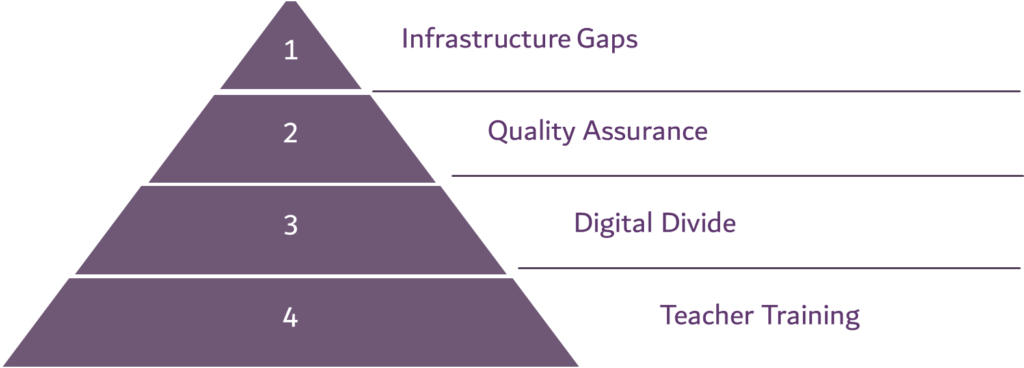The education sector in the Middle East is undergoing rapid transformation, driven by increased government reforms, Technology adoption and private sector investments.

Market growth overview
Education sector in the Middle East is expected to grow at a steady pace, with significant contributions from the UAE, Saudi Arabia, and Egypt.
The Middle East’s young population and government reforms are also a major contributors to growth. For instance, Egypt’s education sector benefits from a growing population and significant government reforms. By 2030, an additional 11 million K-12 school places will be needed, with the private sector accounting for about 2.1 million.
The UAE and KSA are leading the way in the Middle East’s educational sector growth followed by Egypt with the following projected Compound Annual Growth Rates (CAGR) from 2023 to 2030
Technological Advancements Transforming Learning Environments
The pandemic accelerated the adoption of e-learning, making it a key focus for governments and private investors
Digital tools and online platforms have transformed education, making it more accessible and personalized. E-learning platforms offer diverse resources, interactive content, and virtual classrooms.
Artificial intelligence (AI) plays a pivotal role in this educational revolution. By employing AI-driven solutions, educators can offer personalized learning experiences that adapt to individual student progress and preferences. This is crucial in addressing the unique challenges faced by students across the region that enhanced educational framework that prioritizes efficiency and engagement.
The UAE’s education technology (edtech) market is expected to grow to $7.1 billion followed by KSA $5.8 billion and Egypt $3.2 billion by 2030

Investment Landscape in Education Sector
In recent years, the Middle East has witnessed significant growth in investments directed toward the education sector. Both public and private entities are increasingly recognizing education as a critical driver of economic and social development.
Governments across the region have initiated various reforms aimed at enhancing educational systems, often in alignment with their national visions for economic diversification .

Many countries in the Middle East have prioritized education in their national budgets, allocating substantial resources to improve infrastructure, educational quality, and access. For instance, initiatives such as Saudi Arabia’s Vision 2030 outline comprehensive strategies for transforming the education landscape, emphasizing the importance of equipping students with skills relevant to the labor market. Similarly, the UAE has made substantial investments in ed-tech and innovation, aiming to position its educational institutions among the best globally.
Future Opportunities and Challenges Ahead
The Middle East’s education sector stands at a critical crossroads, with significant opportunities lying in its ability to adapt to an evolving landscape.
A multitude of opportunities to improve and expand the Middle East’s education sector, fulfilling both present and future educational needs:

While the education sector is poised for significant growth and opportunities, it may face challenges such as infrastructure gaps and a shortage of skilled educators. However, through strategic planning, government support, and public-private partnerships, the following challenges can be overcome:

Overall, while the technological advancements in the Middle East education sector present remarkable opportunities for growth and innovation, addressing the challenges of access and training is vital to ensure equitable learning environments for all students.
We are passionate about helping our clients unlock the full potential of the education sector and play a pivotal role in shaping the future of learning in the Middle East. Partner with ClarixConsult to turn insight into action and support the growth of the education sector in the Middle East.



